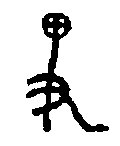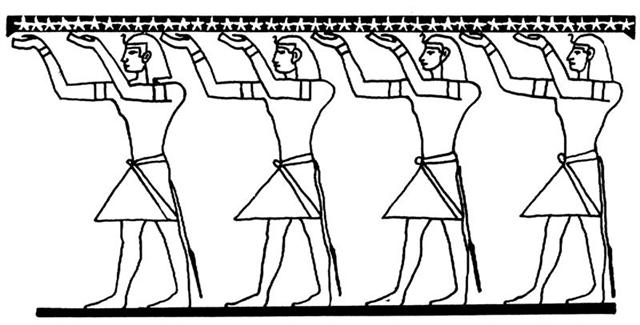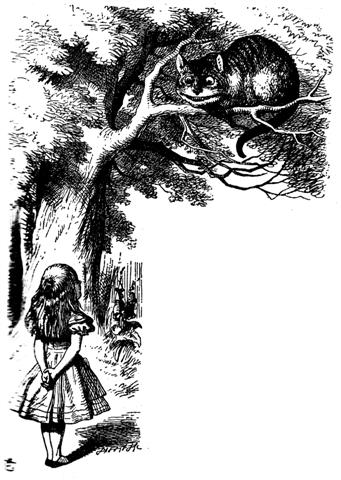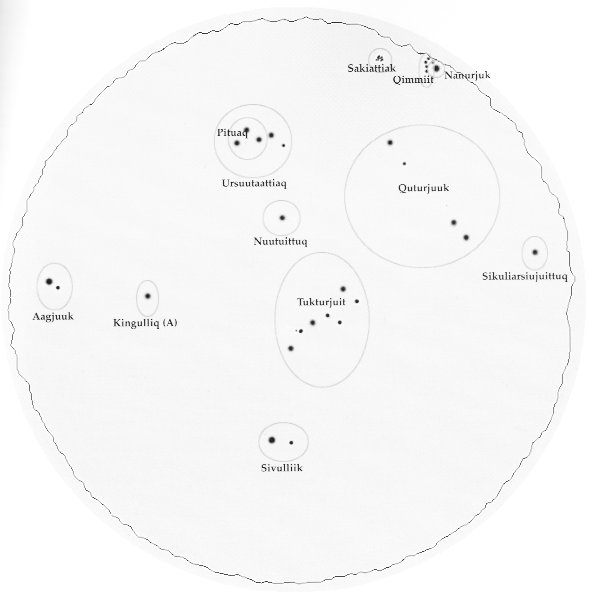... While the stars Altair and Tarazed can be seen during the fall months, late in the evening to the southwest, they are only recognized as Aagjuuk by Inuit following their first morning appearance on the north-eastern horizon, usually around mid-December. Throughout January, February, and March they are seen during the pre-dawn hours but thereafter are rapidly taken over by sunlight as the days lengthen ...
Ka. Particle of the affirmative imperative, of cardinal numerals, of independent ordinal numerals, and of emphatic exclamation, e.g. ka-maitaki! how nice! Vanaga. Ká. 1. To light a fire in order to cook in the earth oven (see umu): he-ká i te umu, he-ká i te kai. 2. Figuratively: to fire up the soul. To put oneself in a fury (with manava): ku-ká-á toona manava he has become furious. Vanaga. 1. Of T. 2. Imperative sign; ka oho, ka tere, ka ea, begone!; ka ko iha, a greeting T; ka mou, hush; ka oho, goodbye. 3. Infinitive sign; mea meitaki ka rava, a thing good to take; ka harai kia mea, to accompany. 4. A prefix which forms ordinals from cardinals. 5. The dawning of the day. 6. Different (? ke). Churchill. Hero. Herohero. 1. Crimson, bright red; he varu i te ki'ea ka herohero ró te hakari, to paint one's body red with ki'ea; ku hú á te huka-huka, ku herohero á i roto i te ahi, burning wood shows red in the fire. 2. The colour of ripe fruit, the yellow of ripe bananas. 3. Figuratively: angry: ku herohero á te manava = ku ká te manava. Vanaga. Herohero. Scarlet, suffocating T. Ura herohero, brilliance of flames. Churchill. (58) ata popohanga toou e to ata hero e, 'Yours is the morning shadow' refers to an area in Ata Hero where the house of Ricardo Hito is now located. Barthel 2. ... These two glyphs represent the first period of daylight. As we now know, after having learned about these ten periods from P, at this time of the day the sun will still be below the horizon, although light is growing (glowing) in the eastern sky ... In Aa1-16 the top 'flames' of the sun are prominent and in Aa1-17 we see tapa mea marking the end of the period of 'pregnancy' of Mother Earth. The glyph Aa1-16 has 7 'flames' because the top one is enlarged and divided into two. The normal number 6 for the sun is changed to 7 as a mark that the sun has not yet come out. Number 7 indicates night. Not only are there 7 'planets' but there are also 4 * 7 nights in the (visible) period of the moon. Moon symbolizes night and sun symbolizes day. Number 7 also characterizes the surface of the earth (night and in the daytime shadows). ... The most ancient of all astronomical instruments, at least in China, was the simple vertical pole.
With this one could measure the length of the sun's shadow by day to determine the solstices ... and the transits of stars by night to observe the revolution of the sidereal year. It was called pei or piao, the meaning of the former being essentially a post or pillar, and the latter an indicator. Pei can be written with the bone radical ... or with the wood radical, in which case it means a shaft or handle. Ancient oracle-bone forms of the phonetic component show a hand holding what seems to be a pole with the sun behind it at the top ...
so that although this component alone came to mean 'low' in general, it may perhaps have referred originally to the gnomon itself. This is after all an object low on the ground in comparison with the sun, and shows the long shadow of a low sun at the winter solstice, the moment which the Chinese always took as the beginning of the tropic year ... ... Again the dream soul went on her way and reached Te Pei. She named the place 'Te Pei A Hau Maka O Hiva. The dream soul went on and came to Te Pou. She named the place 'Te Pou A Hau Maka O Hiva' ... [E:7] ... Light is located in the sky and we receive it thankfully (from the sun during the day and during the night from the moon and the stars). Darkness is the original state of middle earth. First comes pregnancy and during that time there is no light ... ... That the sun is not yet born (still below the horizon, still inside mother earth) is marked by the shape of Y.
... Among the multitude of gods worshipped by these people were four whom they called by the name Bacab. These were, they say, four brothers placed by God when he created the world at its four corners to sustain the heavens lest they fall ... In the ms. Ritual of the Bacabs, the cantul kuob ['ku' means god and the suffix '-ob' indicates plural], cantul bacabob, the four gods, the four bacabs, occur constantly in the incantations, with the four colors, four directions, and their various names and offices ... ... According to an etiological Hawaiian myth, the breadfruit originated from the sacrifice of the war god Kū. After deciding to live secretly among mortals as a farmer, Ku married and had children. He and his family lived happily until a famine seized their island. When he could no longer bear to watch his children suffer, Ku told his wife that he could deliver them from starvation, but to do so he would have to leave them. Reluctantly, she agreed, and at her word, Ku descended into the ground right where he had stood until only the top of his head was visible. His family waited around the spot he had last been day and night, watering it with their tears until suddenly a small green shoot appeared where Ku had stood. Quickly, the shoot grew into a tall and leafy tree that was laden with heavy breadfruits that Ku's family and neighbors gratefully ate, joyfully saved from starvation ... ... In the upper part of the façade, as a pendant to the calabash on the right which represents the sun, it is a drawing of the moon, either full or as a crescent. This is a reminder, on the left-hand side, of the celestial regions. In the remaining space on the wall there are various ritual objects and animals in no particular order: the priest's forked staff, which is a symbol of both masculinity and femininity; the shaft itself, which is breast-high, is male, the female part is the fork in which the priest rests his forefinger, itself a symbol of the male ... ... And then the bone spoke; it was there in the fork of the tree: Why do you want a mere bone, a round thing in the branches of a tree? said the head of One Hunaphu when it spoke to the maiden. You don't want it, she was told. I do want it, said the maiden. Very well. Stretch out your right hand here, so I can see it, said the bone. Yes, said the maiden. She stretched out her right hand, up there in front of the bone. And then the bone spit out its saliva, which landed squarely in the hand of the maiden ...
In Aa1-16 we can read that the enlarged top two flames are corresponding to the top of this Y - which was one of the 4 cardinal points. ... Among the Eskimo they do not have our structure where the sun circulates up and down each 24 hours. In summer their sun is always up, in winter their sun is always down, that is the pattern north of the polar circle. Only during spring and autumn is their pattern similar to ours. But they keep track of diurnal time also in winter. According to Arctic Sky: ... By all accounts, Aagjuuk was for Inuit everywhere one of the most important constellations. It seems to have been known by this name, or a variant of it, across the entire Arctic ... The linking of Aagjuuk's stars with dawn and solstice were the characteristic feature of this constellation recognized as well by other Arctic peoples, in particular the Chukchis: 'The stars Altair and Tarazed of the constellation Aquila are singled out by the Chukchis as a special constellation, Peggittyn. This constellation is considered to bring the light of the new year, since it appears on the horizon, just at the time of winter solstice ...
... An emphatic and, in our context, attractive explanation of the constellation's name is found in a legend from Noatak, Alaska. Here agruks (Aagjuuk) are said to be 'the two sunbeams of light cast by the sun when it first reappears above the horizon in late December' ... The legend ... then goes on to recount how these two sunbeams were transformed into stars and so confirms, from the Inuit point of view, the various and widespread connections between the Aagjuuk stars, winter solstice, daylight, and the return of the Sun ... Many of the elders interviewed recalled as children being sent outside in the dark winter mornings to see if Aagjuuk were visible. The term 'aagjuliqtuq' ('it is making the sign of Aagjuuk') implied that the day's activities should begin: 'These stars were used to determine the passage of time. Before the break of dawn we would visit our elder and he would ask if it was 'Aagjulirtuq'. Aagjuuk are located above the daylight ... The Eskimo (Inuit people as they call themselves) consequently have a conceptual structure for dawn which is nearly identical with that indicated in Aa1-16. The two stars leading the sun out of darkness are like the two tips of the big 'flames' in Aa1-16. We can imagine that Mother Earth has her legs spread apart and stretched upwards waiting for the child, the Sun, to be born. That explains the shape of Y ... ... Sometimes the 'map' in our minds is so strong that we cannot observe reality as it 'really' is: ... Most published descriptions of Aagjuuk tend to leave the impression that it suddenly appears on cue as if out of nowhere... This definition is somewhat misleading because throughout the autumn and winter months at latitudes above the Arctic Circle Aagjuuk's principal star, Altair, is one of the brightest and most visible stars in the south and western sectors of the sky. But so completely is Aagjuuk identified with mid-December and the winter solstice that one Igloolik elder, invited to point to the constellation in early November, firmly replied that we would not see it until around Christmas, and this in spite of the fact that Altair was at the time in full view to the southwest ... This is the main point towards which I was striving above. We should also remember: ... Men's spirits were thought to dwell in the Milky Way between incarnations. This conception has been handed down as an Orphic and Pythagorean tradition fitting into the frame of the migration of the soul. Macrobius, who has provided the broadest report on the matter, has it that souls ascend by way of Capricorn, and then, in order to be reborn, descend again through the 'Gate of Cancer'. Macrobius talks of signs; the constellations rising at the solstices in his time (and still in ours) were Gemini and Sagittarius: the 'Gate of Cancer' means Gemini. In fact, he states explicitly (I,12.5) that this 'Gate' is 'where the Zodiac and the Milky Way intersect'. Far away, the Mangaians of old (Austral Islands, Polynesia), who kept the precessional clock running instead of switching over to 'signs', claim that only at the evening of the solstitial days can spirits enter heaven, the inhabitants of the northern parts of the island at one solstice, the dwellers in the south at the other ... Considering the fact that the crossroads of ecliptic and Galaxy are crisis-resistant, that is, not concerned with the Precession, the reader may want to know why the Mangaians thought they could go to heaven only on the two solstitial days. Because, in order to 'change trains' comfortably, the constellations that serve as 'gates' to the Milky Way must 'stand' upon the 'earth', meaning that they must rise heliacally either at the equinoxes or at the solstices. The Galaxy is a very broad highway, but even so there must have been some bitter millenia when neither gate was directly available any longer, the one hanging in midair, the other having turned into a submarine entrance ... If chaos broke out when the Gregorian calendar forced days away, how much more so would not a change from one zodiacal sign to another have caused? Especially so if it meant suddenly being left hanging in midair (like a bat in a tree) or forced ('forked') down below the surface of the sea? ... He was also a great kite-flier, and the story is told of a small boy of another name (but it could only have been Maui) who once came half out of the water and snatched the kite-string of a child on the land. He then slipped back into the sea and continued flying it from under the water until his mother was fetched, for she was the only one who could control him and make him behave at that time ...
|
||||||||||||||||||||||||||||









